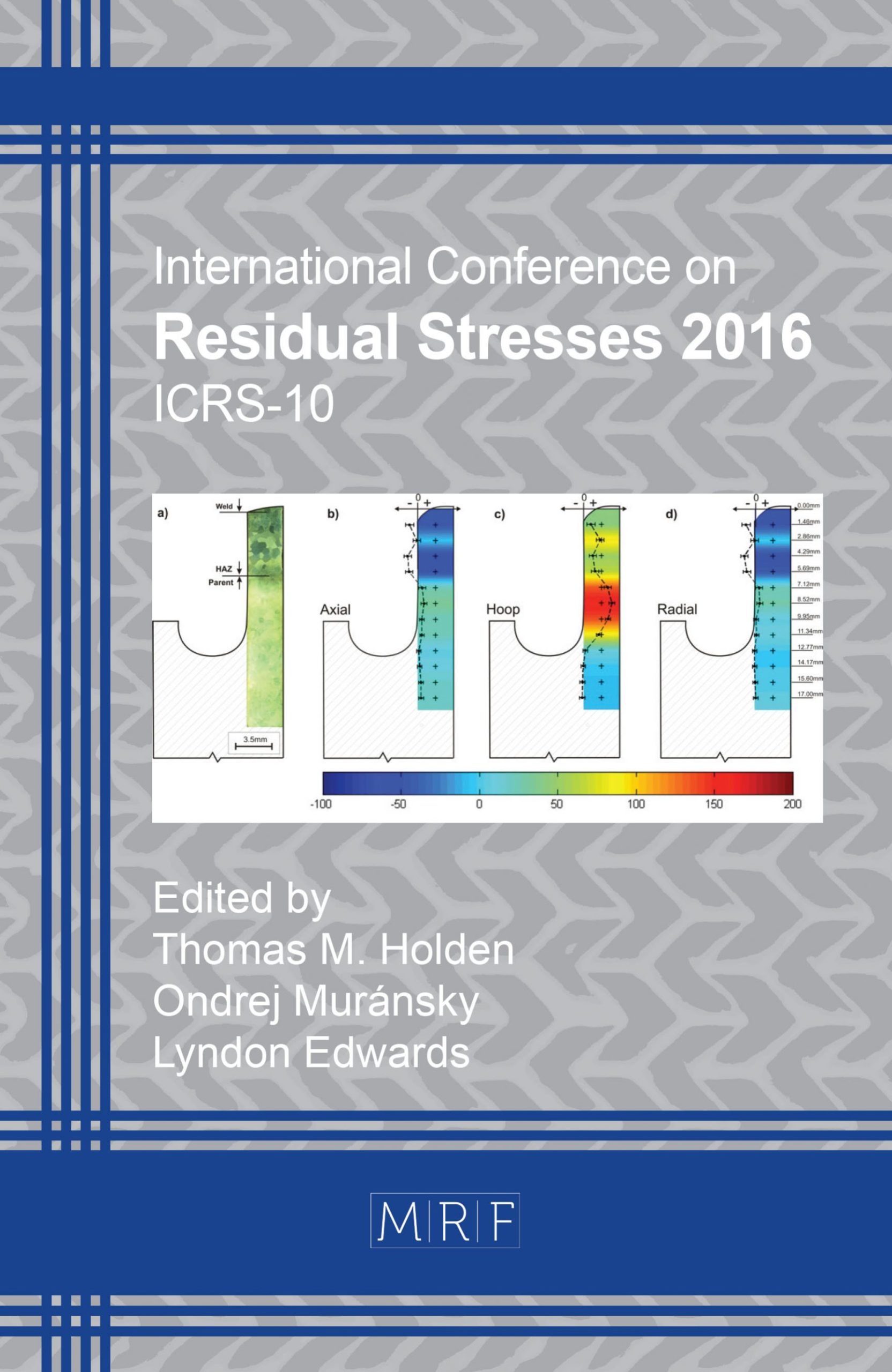Effect of Element on Porosity and Residual Stress Distribution of A7N01S-T5 Aluminum Alloy Welded Joints in High-Speed Trains
Y. Liu, J. Chen, G. Guo, J. An, H. Chen
download PDFAbstract. In this paper, four types of A7N01S-T5 aluminum alloys with different chemical elements were investigated. Welded joints of the alloys were fabricated under 70%environmental humidity conditions at 10°C with single pulse GMAW welding technology. The alloys and their joints were tested and examined with impact toughness, porosities distribution and Synchrotron Radiation. The element results showed that the elements of Zn and Mg were the main factors that affect impact properties of the alloys. The #2 alloy which has the element of Zn-4.29 Mg-1.56 Mn-0.22 Cr-0.14 Zr-0.01 Ti-0.027 had the best impact properties which were 20.76J.The results indicated that the #2 had the lest stomatas only 22 and had the lowest porosity rate of 0.009% . Weld zone compared with the base material, the content of Mn and Ti had reduced.the#2 residual stress evenly distributed,the maximum tensile stress was 99Mpa in weld and the maximum compressive stress -66Mpa in base metal.forming .
Keywords
A7N01S-T5 Aluminum Alloys, Chemical Element, Porosity Distribution, High Speed Trains
Published online 12/22/2016, 6 pages
Copyright © 2016 by the author(s)
Published under license by Materials Research Forum LLC., Millersville PA, USA
Citation: Y. Liu, J. Chen, G. Guo, J. An, H. Chen, ‘Effect of Element on Porosity and Residual Stress Distribution of A7N01S-T5 Aluminum Alloy Welded Joints in High-Speed Trains’, Materials Research Proceedings, Vol. 2, pp 503-508, 2017
DOI: http://dx.doi.org/10.21741/9781945291173-85
The article was published as article 85 of the book Residual Stresses 2016
![]() Content from this work may be used under the terms of the Creative Commons Attribution 3.0 licence. Any further distribution of this work must maintain attribution to the author(s) and the title of the work, journal citation and DOI.
Content from this work may be used under the terms of the Creative Commons Attribution 3.0 licence. Any further distribution of this work must maintain attribution to the author(s) and the title of the work, journal citation and DOI.
References
[1] Qin C, Gou G Q, Che X L, et al. Effect of element on tensile properties and fracture toughness of Al–Zn–Mg alloy (A7N01S-T5) used in high speed trains [J]. Materials & Design, 2015, 91:278-285.
[2] J. Li,M. Zhang, Y. Zhao, Z. Lin, Control of porositis in aluminum alloys welds and research of welding joint property, J. East China Shipbuilding Inst. (Nat. Sci. Ed.) 18 (5)(2004) 78–81.
[3] Gou G, Zhang M, Chen H, et al. Effect of humidity on porosity, microstructure, and fatigue st Rength of A7N01S-T5 aluminum alloy welded joints in high-speed trains [J]. Materials & Design, 2015, 85: 309-317.
[4] Fang H C, Chen K H, Chen X, et al. Effect of Zr, Cr and Pr additions on microstructures and properties of ultra-high strength Al–Zn–Mg–Cu alloys[J]. Materials Science & Engineering A, 2011, 528(25–26):7606-7615. http://dx.doi.org/10.1016/j.msea.2011.06.018
[5] J-Y. Buffie`re, S. Savelli, P.H. Jouneau , E. Maire , R. Fouge. Experimental study of porosity and its relation to fatigue mechanisms of model Al–Si7–Mg0.3 cast Al alloys[J]. `Materials Science and Engineering A316 (2001) 115–126. http://dx.doi.org/10.1016/S0921-5093(01)01225-4
[6] Bray DE, Tang W. Subsurface stress evaluation in steel plates and bars using the LCR ultrasonic wave. Nucl Eng Des 2001;207:231–40. http://dx.doi.org/10.1016/S0029-5493(01)00334-X































